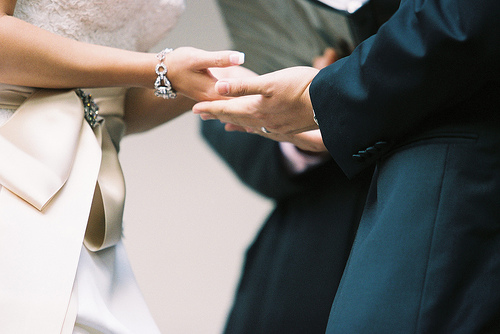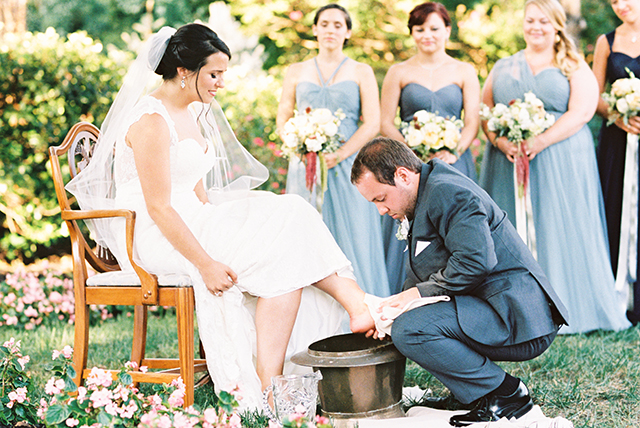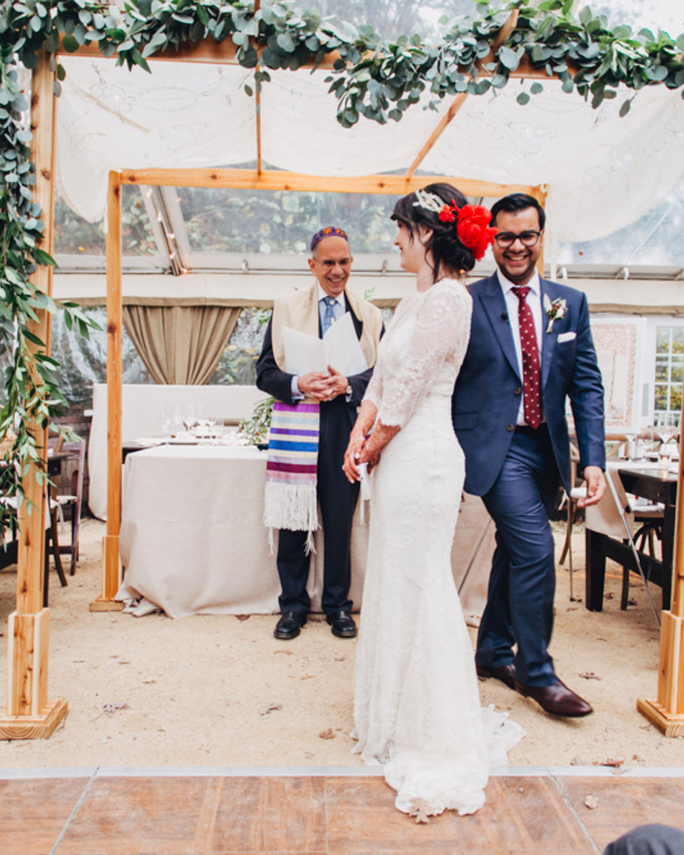One of the most popular traditions seems to be the addition of the unity candle ceremony. Symbolizing the union of two souls, it’s a beautiful moment between any newlywed couple. But, did you know there are other unification ceremonies to choose from when planning your wedding?
And although the Unity Candle Ceremony seems to have been with us forever, in reality, it’s only been at its popular peek for a bit over a decade. During those years, more “two-become-one” motifs have arrived to round out the theme. Unification ceremonies aren’t just a symbol of togetherness, they’re also flexible elements of a wedding.
These ceremonies can be “opened up” to include important family members, such as children from previous marriages. These ceremonies can also be “stacked.” It’s not unusual to find a couple that includes at least two types of unification ceremonies, for example, both the candle and the wine could be layered on top of each other.
Alternatives to the Unity Candle Ceremony
Rose Ceremony
The rose ceremony is a flexible, informal ceremony especially suited to an interfaith or non-religious wedding, not to mention a garden wedding! In the rose ceremony, the happy couple exchanges a single rose as their first married gift to one another. They are asked to recall this symbol of their love during the more trying seasons of marriage.
Hand Ceremony
In the hand ceremony, the bride takes the groom’s hands in hers, palms up. The officiant invites her to view his hands as a gift, and says: “These are the hands that will work alongside yours, as together you build your future, as together you laugh and cry, and together you share your innermost secrets and dreams.”
The groom then takes the bride’s hands, palm side up. The officiant says, “They are the hands that will passionately love you and cherish you through the years, for a lifetime of happiness, as she promises her love and commitment to you all the days of her life.”
Knot Ceremony
In the knot ceremony, the mothers of the couple are given a cord, which the officiant later asks them to give to the bridal couple. The couple ties a lover’s knot, which they may save to look back on later.
Sand, Water & Wine Ceremonies
These are all mixing ceremonies suited to a Unitarian or interfaith wedding. The unity sand ceremony is said to arise from Apache customs and is popular at beach weddings. In each case, the bride and groom pour sand or liquid from two separate vials into one. In the wine ceremony, they drink the mixed wine.
A nice touch is to have the bride pour white wine while the groom pours red. You can then serve rosé at the reception to remind everyone of the ceremony.
Another meaningful touch for an ethnic couple is including their countries of origin. You might acquire a bottle of wine — or sand — from both the bride and groom’s countries to mix at the ceremony.
The Salt Covenant
The salt covenant is an ancient tradition, well-described in the Bible, and appearing regularly in Indian-national and Jewish weddings. Like the Jewish Chuppah, the salt covenant (a mixing ceremony with ancient connotations of loyalty, protection, and hospitality) is beginning to show up in non-Jewish weddings as well.
The Foot-Washing Ceremony
The foot-washing ceremony (not to be confused with the Scottish bridal foot-washing ceremony, a wild pre-wedding event!) is a fascinating, solemn custom emphasizing the role of dual servitude in a marriage. It’s also known as the “washing of the feet” evolved from the traditions of the Roman Catholic Church. Taking part in this act, washing each others’ feet, is a symbol that neither is above the other in the relationship.
Bread-Sharing Ceremony
Coming from Russian origin, the bread-sharing ceremony takes place among everyone at the party. The “korovai,” which is a large braided bread, is covered in blessings and then baked in the home of the bride before the wedding. After the ceremony takes place, the bread is shared by the wedding guests.
Circling Ceremony
Typically seen in Jewish ceremonies, the circling begins with the bride circling the groom seven times. This act symbolizes the creation of an invisible wall to ward off any evil spirits that may be near. The ceremony has now evolved into something that partners can contribute to by holding hands and circling together.
Jumping the Broom Ceremony
Another popular tradition inside wedding ceremonies, jumping the broom symbolizes a new beginning for the happy couple. The jumping takes place together during the ceremony and also acts as a sweeping away of the past and joining of two families.






